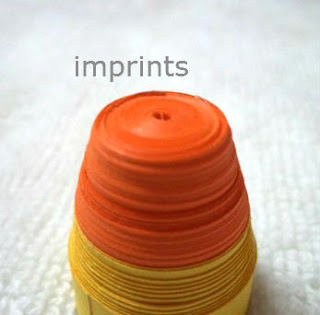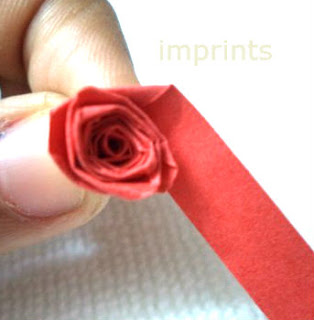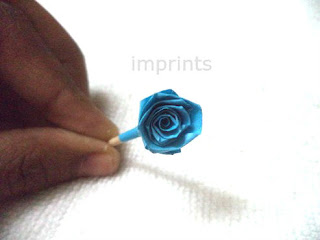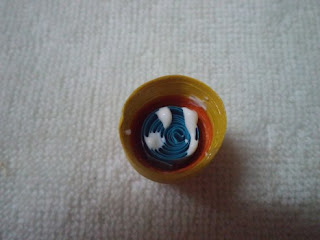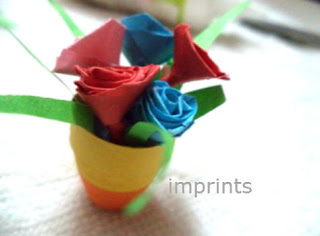Once upon a time in Indian Railways, a minister introduced earthen cups for chai, which I thought was a superb idea to replace toxic plastic cups and expensive paper cups. The scheme got into a mess and eventually vanished. I am not sure if any trains still have them.
But every time a friend talks of having collected those kulhars or matkas for later use, I feel elated.
My friend Deepa Balakrishnan sent me these pictures recently. They are matkas, but not of the railway kind. They are containers of mishti doi, the all-famous Bengali sweet sold in Indian cities.
Deepa, with her three-year-old son Kabir, preserved these little pots after using up the Mishti Doi and painted them for decor and gifting.
These are two little such painted earthern pots stacked one over the other. Deepa and her son three year old Kabir worked at this cute little project.
They used about five colours of Fevicryl acrylics. Some tips that Deepa gives, when you engage your kid for such a project is -
``Before these pot projects, Kabir would just scratch colours over his colouring assignments at the play-school. I would hold his hand to help him paint these pots. These days, he makes sure the colour is within those printed drawings,'' says Deepa.
She says that since he is used to the painting of pots now, he is not as distracted as he was when they began. Like any other excited toddler, Kabir keeps their guests entertained about how he painted each pot.
Between the mother and child and their grandmom, they've painted several pots. Some of them were gifted by Kabir to friends and relatives too.
The design above is a common rangoli design used in front of South-Indian homes. It is pictured above their shelf. She also tried warli designs.
But every time a friend talks of having collected those kulhars or matkas for later use, I feel elated.
My friend Deepa Balakrishnan sent me these pictures recently. They are matkas, but not of the railway kind. They are containers of mishti doi, the all-famous Bengali sweet sold in Indian cities.
Deepa, with her three-year-old son Kabir, preserved these little pots after using up the Mishti Doi and painted them for decor and gifting.
These are two little such painted earthern pots stacked one over the other. Deepa and her son three year old Kabir worked at this cute little project.
They used about five colours of Fevicryl acrylics. Some tips that Deepa gives, when you engage your kid for such a project is -
- cover the child with an apron as it could get messy
- spread out a few sheets of newspaper on the floor to avoid staining
- the pots are breakable, so it is better to work on the floor so that there is minimal chance of dropping the pot by accident (from the table for instance)
- it is better to work on two pots at one time, because, once you paint a colour, you need to wait for the paint to dry, at least 30 minutes (the child could get restless)
- use a combination of thick and thin brushes
- earthern pots
- paint brushes of different sizes
- acrylic colours
- newspapers
- apron for the child
- tissue paper, just in case paints spill
``Before these pot projects, Kabir would just scratch colours over his colouring assignments at the play-school. I would hold his hand to help him paint these pots. These days, he makes sure the colour is within those printed drawings,'' says Deepa.
She says that since he is used to the painting of pots now, he is not as distracted as he was when they began. Like any other excited toddler, Kabir keeps their guests entertained about how he painted each pot.
Between the mother and child and their grandmom, they've painted several pots. Some of them were gifted by Kabir to friends and relatives too.
The design above is a common rangoli design used in front of South-Indian homes. It is pictured above their shelf. She also tried warli designs.
So the next time you binge on Mishti doi, you know what to do with the pots instead of trashing them!
As for the costs involved, she spent Rs 18 each for a bottle on the acrylics or fabric colours. The paints are enough to last many more pots, says Deepa.
You could try out designs with as little as two colours. Just be patient enough with the drying process. Enjoy your next project:)
Pictures courtesy: Deepa Balakrishnan
For permission to use pictures, write to: radicreative@gmail.com

























